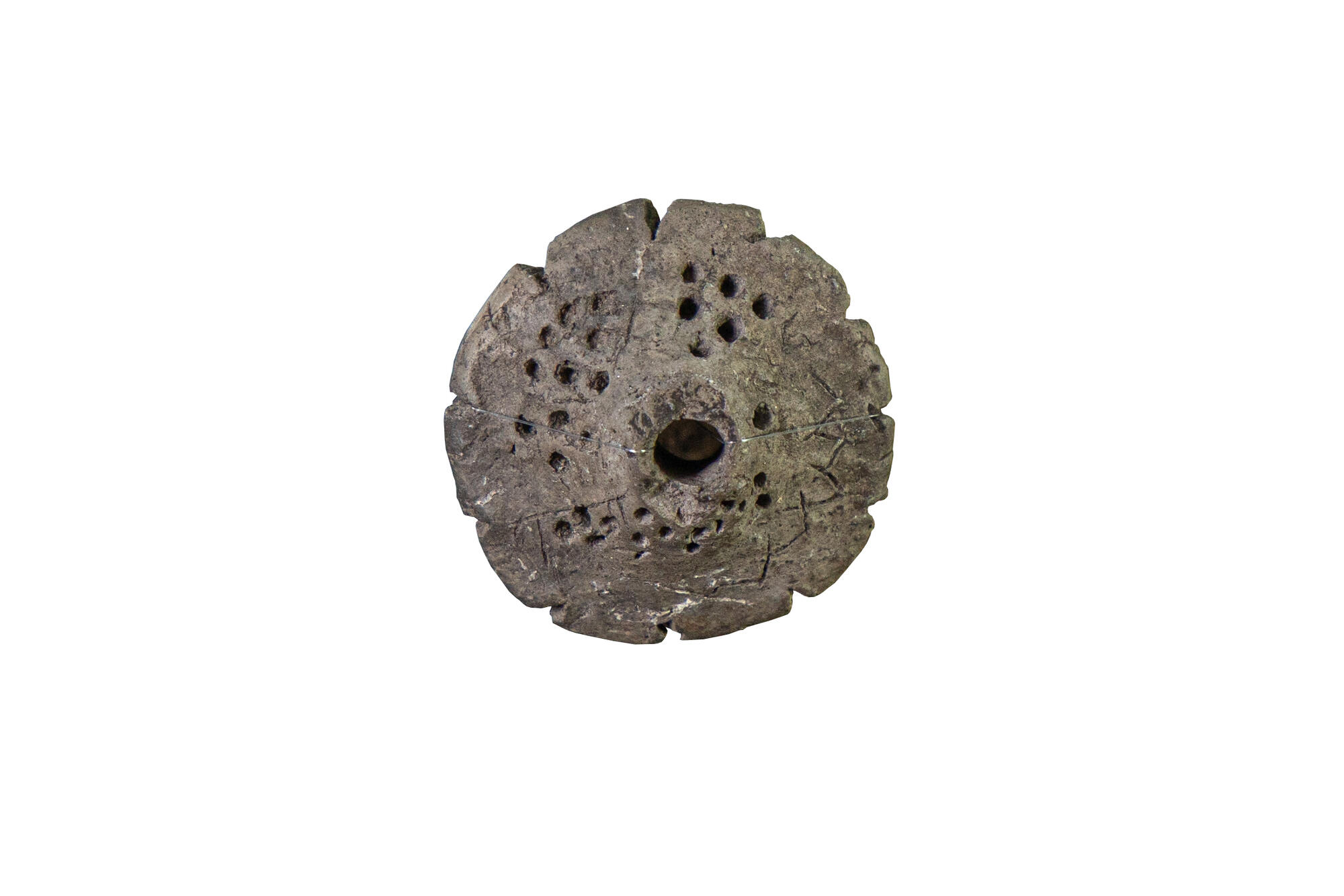The plummet was discovered in 1992 during the excavations of the Kikinsky settlement of the III-VIII centuries AD — a fortified settlement of the Late Dyak culture. This settlement was explored by the archaeological expedition of the Sergiev Posad Museum-Reserve for ten years — from 1984 to 1998. The settlement was inhabited by the representatives of the Finno-Baltic population, that had occupied the territory of the Moscow region before the arrival of the Slavic tribes.
The Dyakovo culture, which was widespread in the Kaluga and Moscow regions, was contemporary to the era of Ancient Rome. Chronologically, it preceded the Old Russian period. This culture got its name from the name of the village of Dyakovo in the modern Moscow, where the first finds were uncovered.
Plummets of the “Dyakovo type” are objects made of baked clay with an admixture of coarse sand. As a rule, they were made of a conical shape, with notches at the edges, a through channel was cut in the center. It is difficult to find two identical plummets among them. Such items are characteristic of the Dyakovo culture.
Sometimes their surface was covered with ornaments and even some mysterious drawings. Archaeologists could not come to a consensus on the purpose of these things for a long time. They were thought to be buttons, and stoppers of vessels-lamps, and weights of the loom, and plummet-weights, and elements of the primitive calendar, and spindle’s whorl.
Today, scientists consider it most likely that the plummets served as a device for weaving cords. The uniform shape, which did not change over the centuries, and the minimal structural components indicate that this is an independent tool, and not part of a large mechanism. On the plummets, the researchers noticed thin grooves diverging radially from the central hole. They were probably rubbed through by the threads.
Archaeologists assume that for making the cord, craftsmen dragged the threads through the central channel in a number equal to the number of grooves on the edges of the weight. From the central hole, they diverged and were tucked into the recesses. Then the threads were shifted and twisted in a certain sequence, and the finished cord was pulled into the channel from the plane of the large disk.
The Dyakovo culture, which was widespread in the Kaluga and Moscow regions, was contemporary to the era of Ancient Rome. Chronologically, it preceded the Old Russian period. This culture got its name from the name of the village of Dyakovo in the modern Moscow, where the first finds were uncovered.
Plummets of the “Dyakovo type” are objects made of baked clay with an admixture of coarse sand. As a rule, they were made of a conical shape, with notches at the edges, a through channel was cut in the center. It is difficult to find two identical plummets among them. Such items are characteristic of the Dyakovo culture.
Sometimes their surface was covered with ornaments and even some mysterious drawings. Archaeologists could not come to a consensus on the purpose of these things for a long time. They were thought to be buttons, and stoppers of vessels-lamps, and weights of the loom, and plummet-weights, and elements of the primitive calendar, and spindle’s whorl.
Today, scientists consider it most likely that the plummets served as a device for weaving cords. The uniform shape, which did not change over the centuries, and the minimal structural components indicate that this is an independent tool, and not part of a large mechanism. On the plummets, the researchers noticed thin grooves diverging radially from the central hole. They were probably rubbed through by the threads.
Archaeologists assume that for making the cord, craftsmen dragged the threads through the central channel in a number equal to the number of grooves on the edges of the weight. From the central hole, they diverged and were tucked into the recesses. Then the threads were shifted and twisted in a certain sequence, and the finished cord was pulled into the channel from the plane of the large disk.


